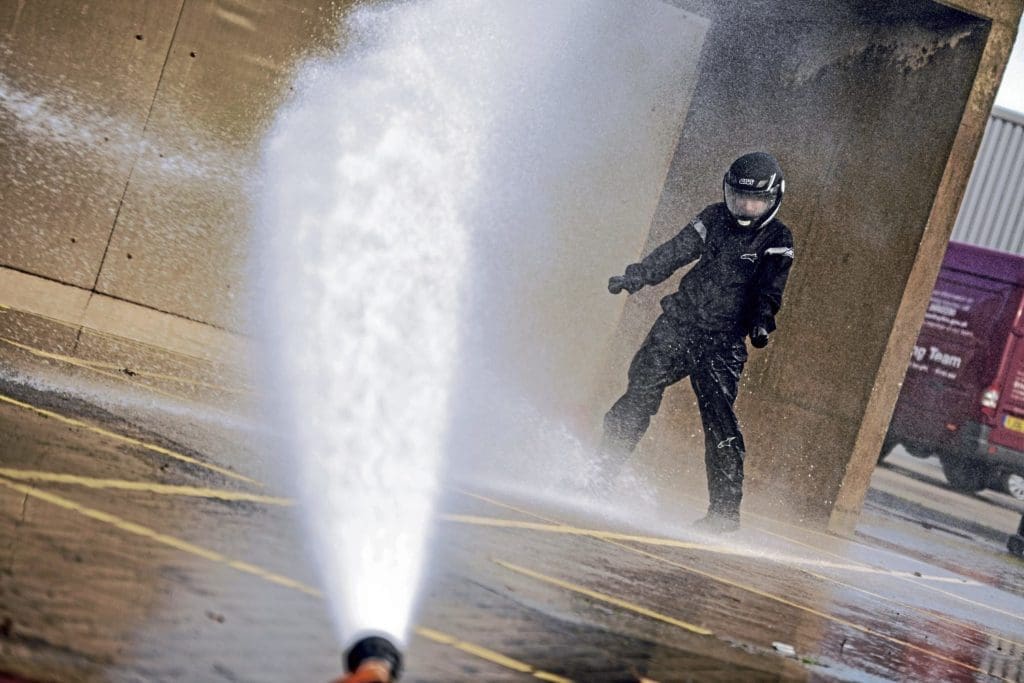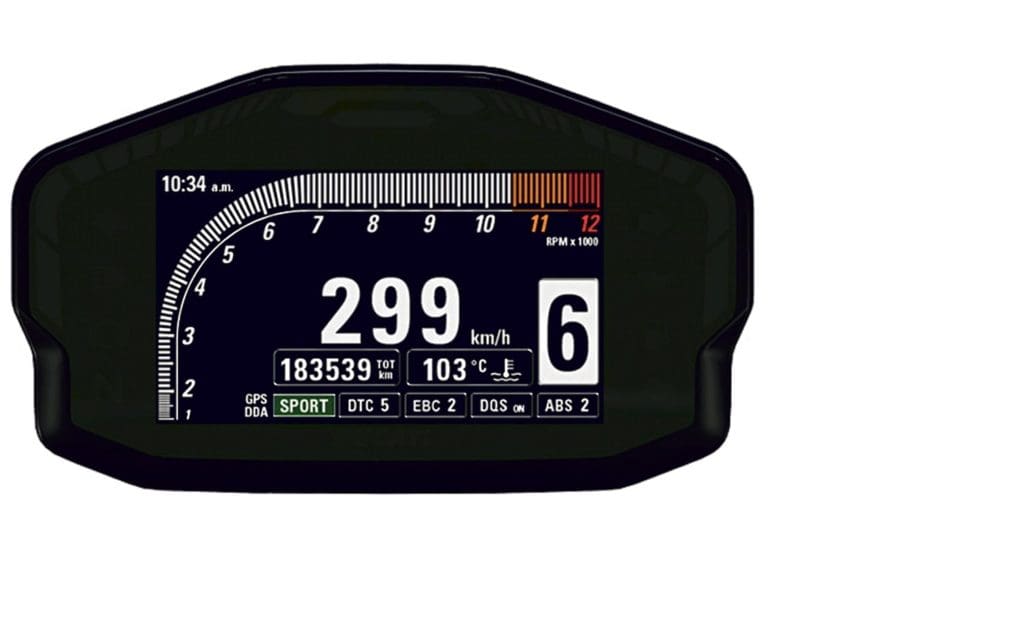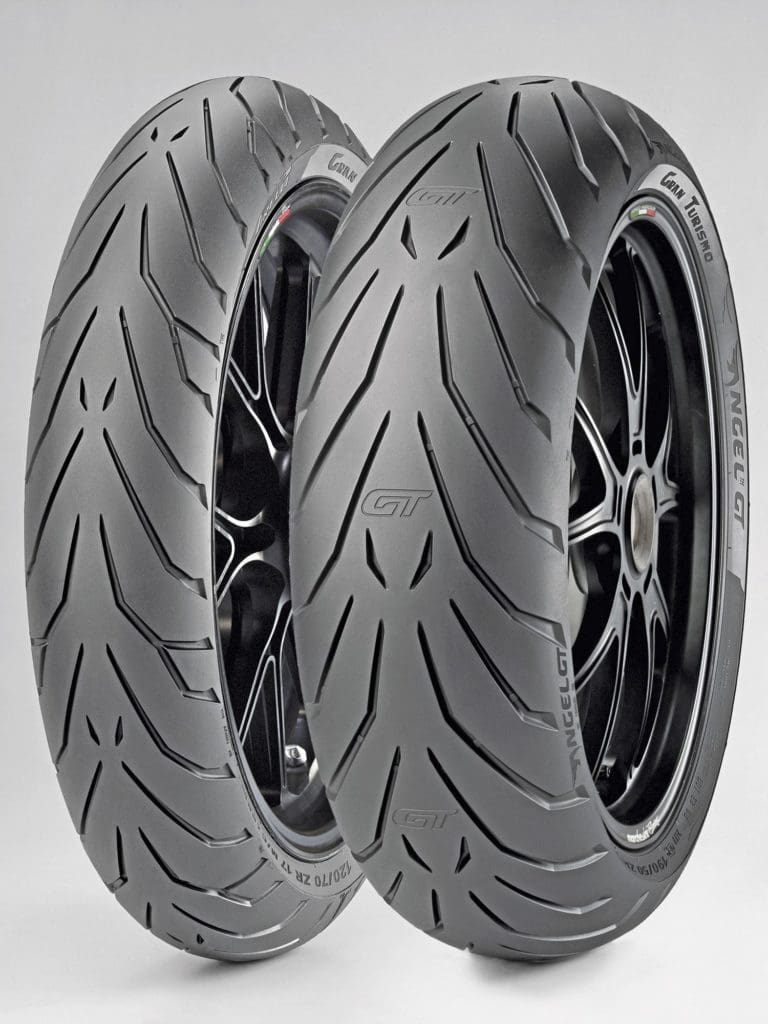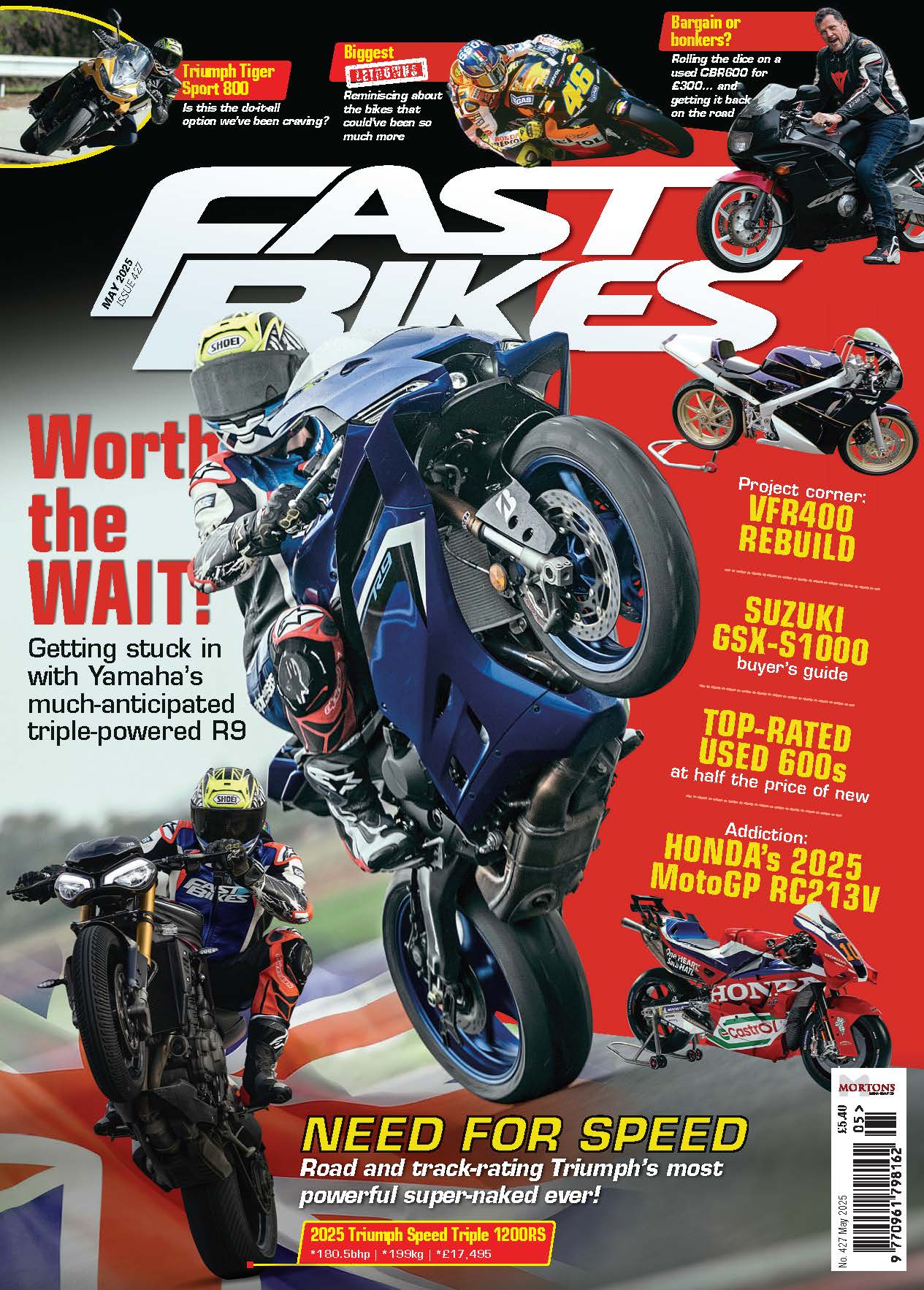Nothing can ruin a good day’s play like a downpour of the wet stuff. But while most of us feel averse to riding in the slippery, cold liquid from above, there are plenty of ways to embrace wet weather riding and make life faster and more fun. Here’s our guide…
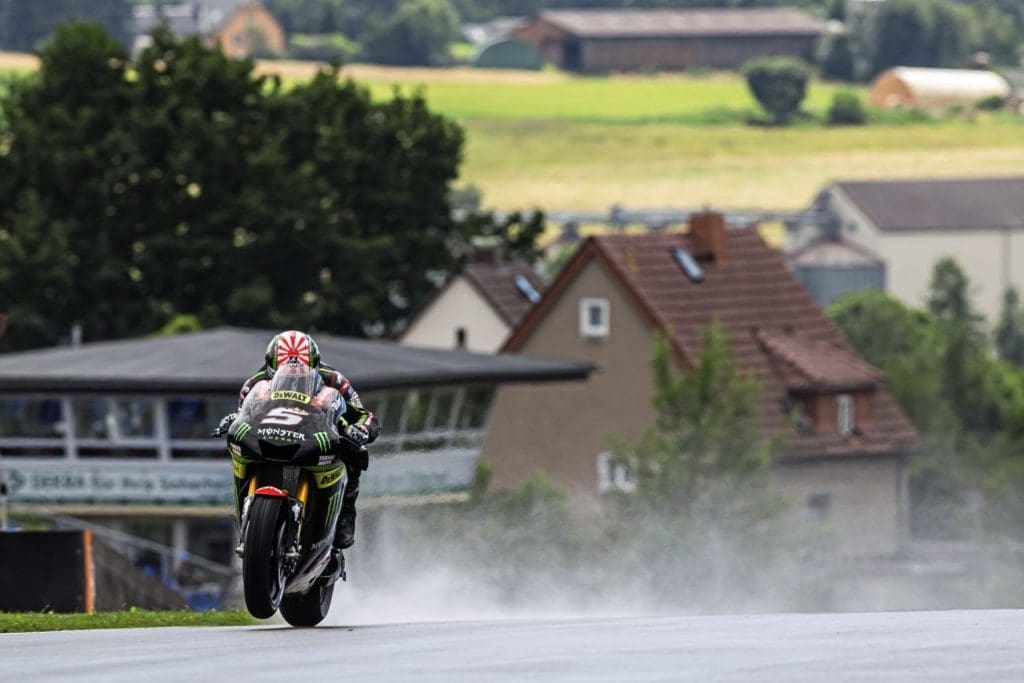
Sort your head
So you want to be a better wet weather rider? Well, before you get side-tracked by thoughts of mastering throttle finesse or optimising your body position, there are a couple of keystones to consider. First up is your mind-set. Without wanting to sound like a wishy-washy head-coach that advises you to stretch nine times a day and eat freshly cut grass from your neighbour’s lawn, you should know conquering the wet begins with optimising your attitude. How many times have you been out riding, on the road or on track, when the wet stuff’s arrived and washed away thoughts of enjoyment faster than it takes you to zip up your leathers? A fair few, I’d say. It’s natural, because the wet physically impacts on how you’re going to ride and how safe you’re going to be. Grip is one of the most important ingredients in motorcycling, and it’s the first thing to go out of the window with rainfall… along with your bottom lip.
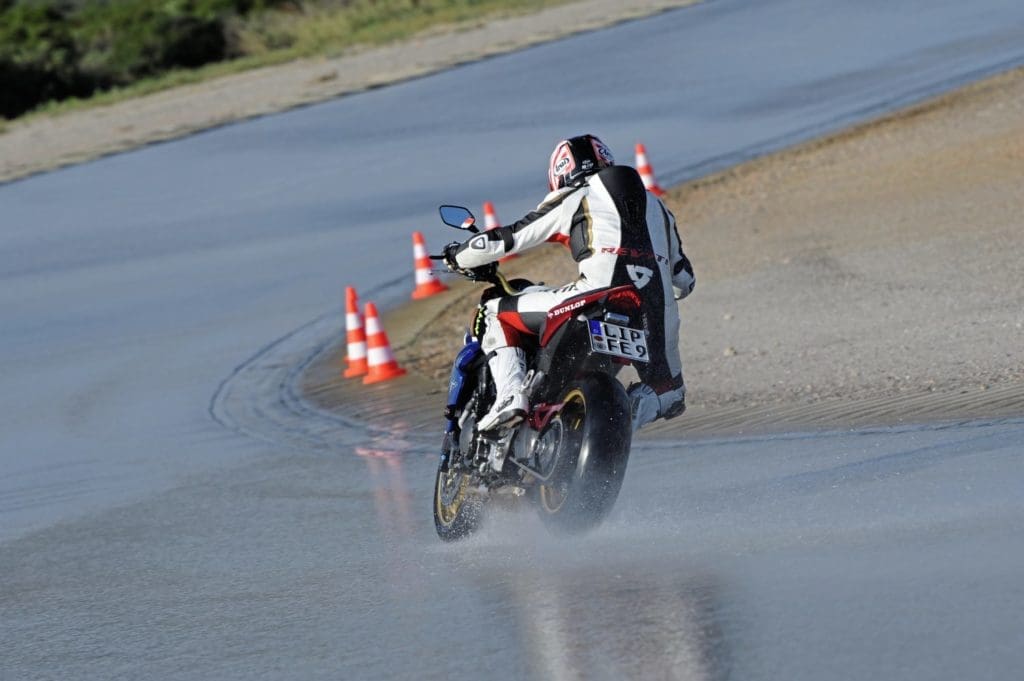
But just because it’s wet it doesn’t mean you’re destined to crash, or have a naff ride for that matter. Remind yourself of this and you’ll feel the tension slide off your shoulders. Racing star Colin Edwards admitted he was never a fan of the wet until he started to embrace it. While his rivals were stressing about the consequences of racing through puddles, he taught himself to get excited and see rainfall as the brilliant leveller it is. For him it became an opportunity to capitalise on, and with his change of attitude came a change in his performance.
That doesn’t mean you can magic yourself special wet weather abilities with just a few thoughts, but physiologically speaking you’ll be able to relax your body, to feel less tense, to breathe more relaxed and focus greater on the job at hand if you can take the stress out of the occasion. Try it and you’ll see for yourself.
The next most important thing to note is how you’re dressed for the occasion. When you’re wet and cold your body tenses up and you might even start shivering; the body’s natural method to generate heat. Trying to play a simple game of chess when you’re frozen and shaking like a blancmange is dangerous enough – just imagine getting a rook in your eye – let alone clambering aboard a ballistic bike and giving it the berries. The point is you need to wear the right kit and there’s shed loads of effective and affordable products on the market, including crucial tools to keep your visor mist free. Dress dry, dress warm and the wet will become instantly more palatable.
Sort your bike
It’s important your bike is fit for the conditions. Fundamentally, I’m talking about tyres. If your rubber’s not up to the challenge, you won’t be either. That’s not just to say that your tyres should be sporting decent tread, to channel water effectively, but also that your tyres are pumped up and ready to perform. Under-pressured tyres will do a poor job of cutting through water and dispersing it through the tread. On track, assuming you’ve invested in a set of ‘wet’ tyres, correct pressures are really important.
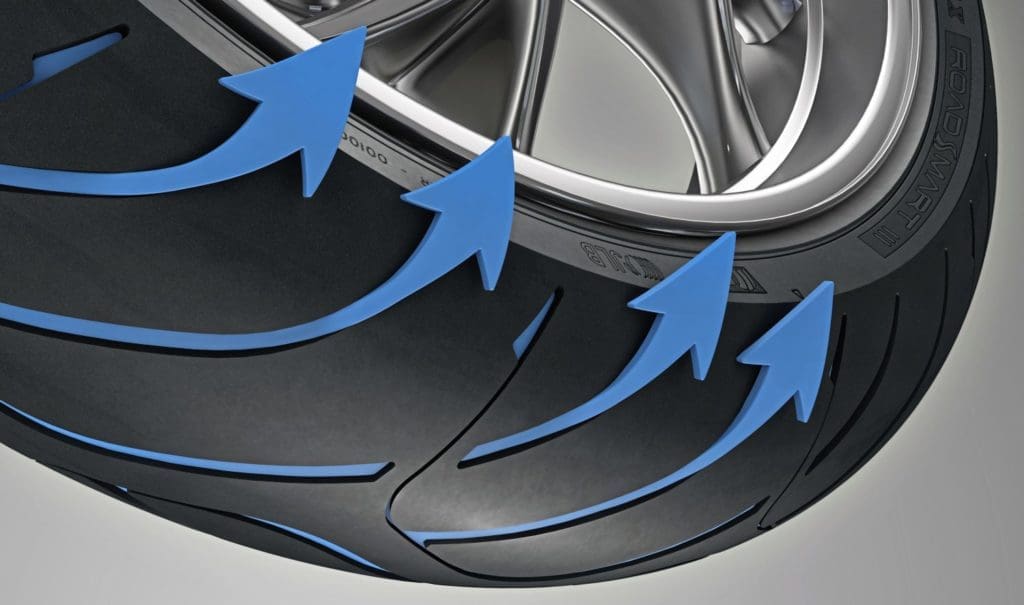
If you’re in doubt about what pressures you should be running, plan in advance and ask your tyre supplier for the best pressures. And if you do have the luxury of wet weather tyres and you do choose to fit them, make sure their rotation is correct or they’ll be pissing in the wind and you’ll be on your derriere.
As with tyres, you should also be mindful of your braking components in the wet. High-performance brake pads can often necessitate temperature to perform properly, so stick to simple organic or sintered pads when it’s wet to achieve the best stopping performances.
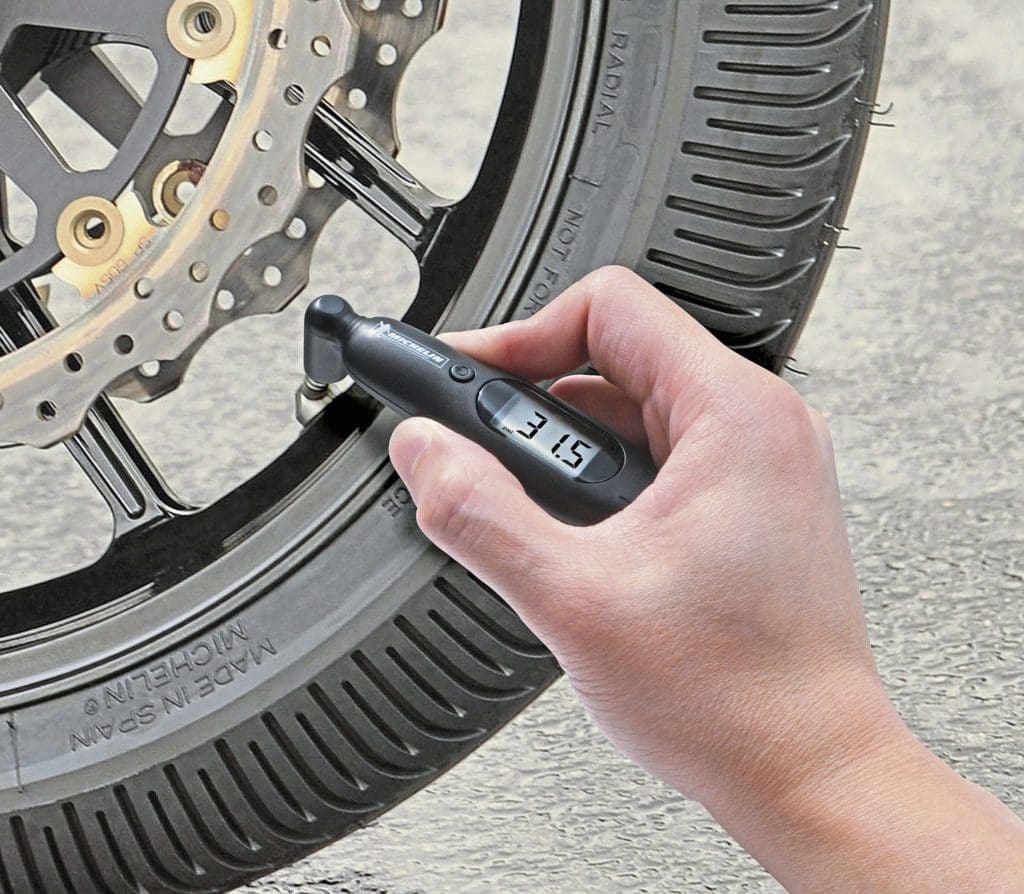
If you’ve got the luxury of riding a more modern bike, you’ll probably have a load of techno goodness you can also dial into the mix. Most contemporary bikes come with alterable power modes; use them. That’s not to say you should always elect for the most sedate of power outputs in the rider mode arsenal, but a more manageable map, with a slower engine pick up, can save you from unwanted powerslides and trips to your local hospital.
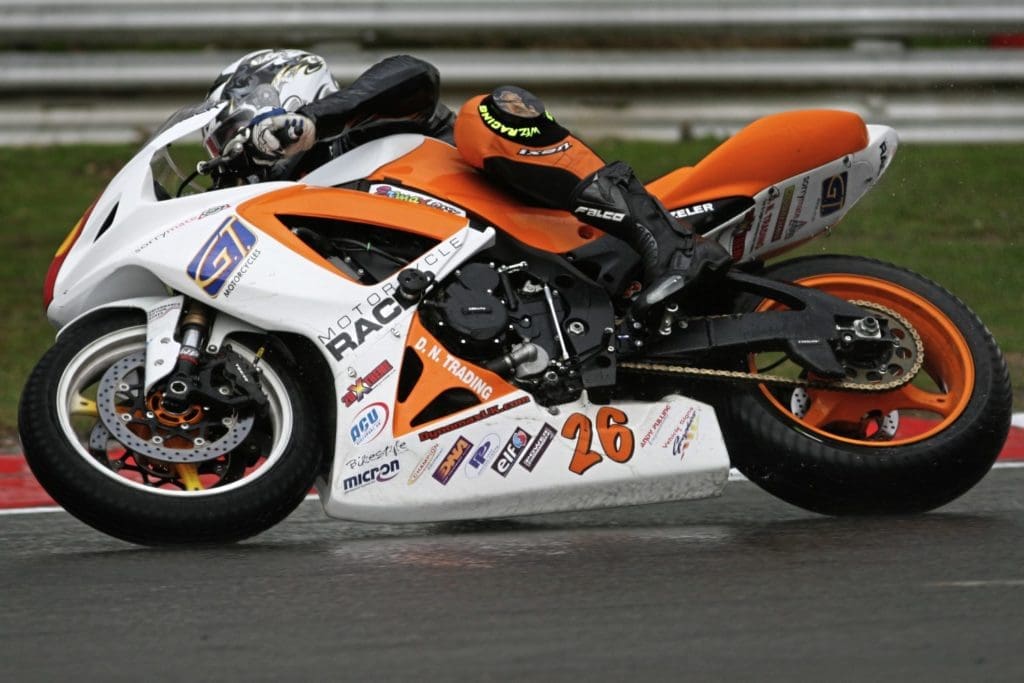
Only you know your skills and your bike’s potential, so it’s on you to choose accordingly. The same goes with selecting traction control levels and engine braking modes. On track, assuming you’re riding hard and pushing your limit, the last thing you want during heavy braking is for the rear wheel to be locked up under engine braking and ploughing you into the kitty litter. The tap of a few buttons could eradicate such scenarios, so don’t be lazy. It’ll help you ride smoother and more focused too. The same principal goes for ABS and Cornering ABS.
Be it on the road or on track, an overeager ABS system is up there with a kick to the crown jewels – you don’t want it. Some bikes allow you to alter the intensity of the system, and track specific options can prove a real aid in the fight against unwanted front wheel lock ups.
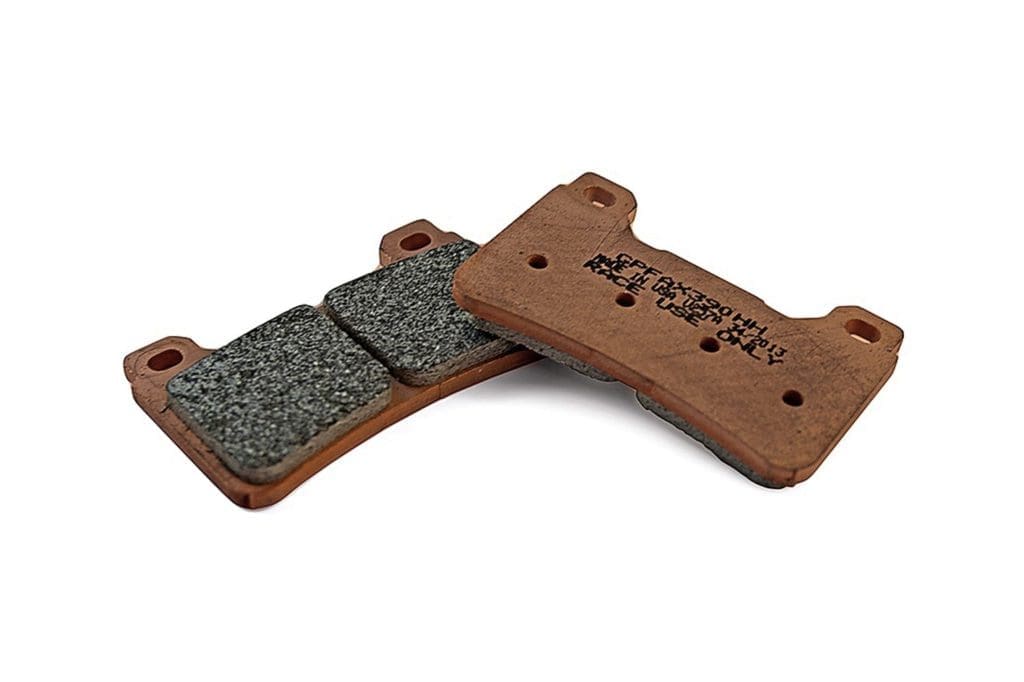
TOP TIP! Get the latex out!
Even winter gloves are susceptible to leakage, so plan ahead and get the rubber gloves out. Garage forecourt types are typically cheap, baggy and assured to split open just when you don’t want them to, so invest in some surgical-standard items.
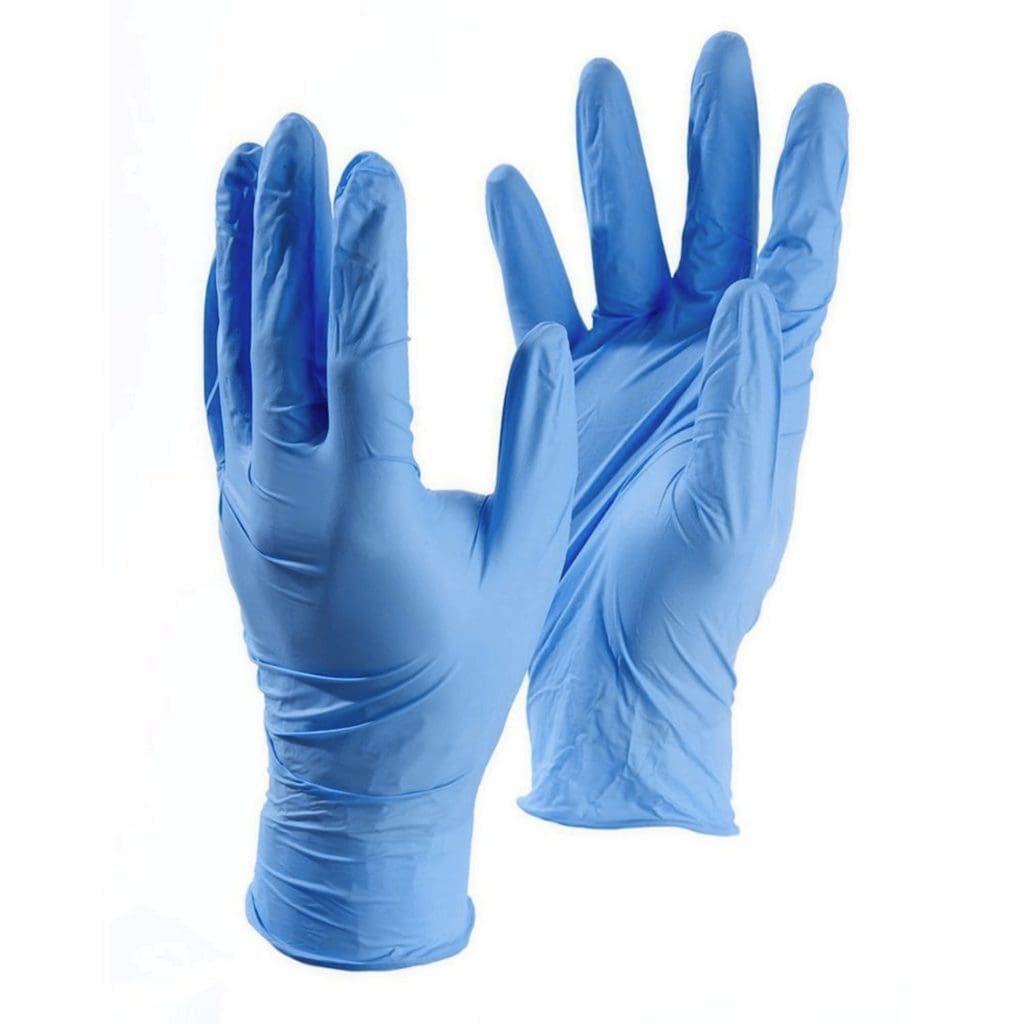
They’ll offer a much better feel and last for numerous rides at a time. Ultimately, even if your gloves start letting in water, nothing’s going to get through the latex, so your digits will keep warmer and dryer for longer.
Sort your style
Now for the important bit: you and your actions. Most of us will have ridden in the wet plenty of times, so you’ll have a gauge of how capable and confident you are when the heavens open. But that’s a limit that’s open to improvement with a few changes to your performance. First things first, learn to relax your body when you ride.

Take a few deep breaths, drop your shoulders and relax your wrists and grip; being comfortable is as key on the track as it is on your favourite B-road. The wet demands respect, but it shouldn’t demand you be stiffer than a statue. T
he less rigid you are, the less likely you’ll be to overwork your bike’s controls or tyres. Be fluid and ready to act should you find your rubber braking traction. On the roads, using road legal treaded rubber, it’s hard to get essential heat into your tyres, which are also limited by the tread they’ve got. In short, unless you’re riding on a surface akin to course sandpaper, your grip will be limited. And never forget that ironworks, white lines and over-banding are more slippery than oil coated banana skins – stay well away! But, all of the above considered, that’s not to say that you have to pootle around with the fear of death staring you square in your eyes.

Through being smooth with your throttle, braking and body actions you can minimise the chance of breaking traction. You’ll be amazed how quickly you can maintain pace around a corner with a constant throttle and settled suspension, even on the road. But obviously you can’t ride like that at a constant everywhere, so you need to learn to ‘feel’ for conditions and adapt to suit the grip levels on offer. A twitch from the front, a slide from the rear; you’ll often be able to pick up warnings of grip levels long before a crash, so look out for them and build your pace accordingly.
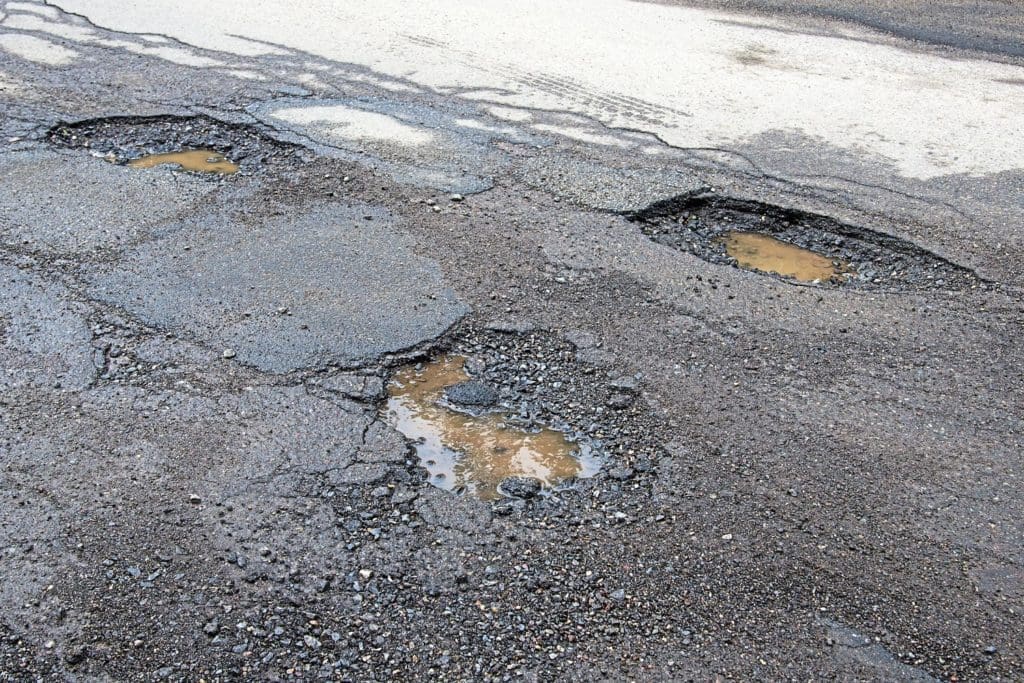
But as for mastering corners in the wet, we’ll go over the scenario from the very beginning; the approach to a bend. Even in the dry, on road or on track, you need to prepare and plan for an upcoming bend, but the whole gig gets a lot more crucial in the wet. In essence, you have to start planning sooner, and make your moves in advance. Up first is braking. Assuming your bike has decent road tyres or track loving wets, you’ll be surprised at how hard you can brake in the wet. But to get the optimum performance, and reduce the risk of front wheel lock-ups, you should progressively build your braking pressure.
TOP TIP: Scrubbing in wets
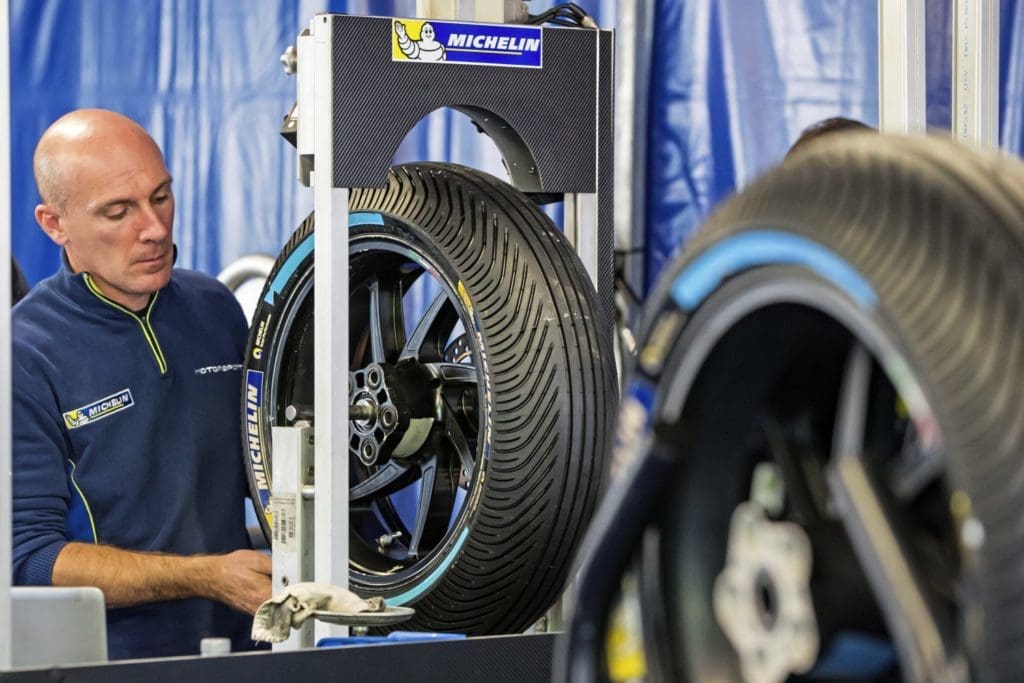
Nothing makes you wince like the sight of spanking new wets and a cold, wet circuit. The sheen on fresh rubber is from a releasing agent and it’s typically slippery, so you’ll want to get it off ASAP, safely. Tyre fitting specialists are likely to have a special cleaning agent that can be used to wash the slippery surface from your tyres, without compromising the chemical make-up of your new rubber, so ask to nab some if you’ve just bought your wets from them. Other people have purported that brake cleaner performs a similar job, but check with your tyres’ manufacturer before spraying away. Chemicals aside, tyre warmers will work sincerely in your favour if you’re set on scrubbing them in the old fashioned way. Hot wets offer more grip than cold ones, so get them up to temperature and progressively add in angle, with no trail braking or aggressive throttle actions in a corner.
(CONTINUED) … This will mean that your forks have time to compress compliantly when squeezing on the front brake, producing positive contact and pressure between the front wheel and the tarmac. If you just grab a handful of brake, or a foot’s worth for that matter, the tyres won’t have chance to mate with the ground their travelling on, meaning you’ll just lock a wheel up… and down you’ll go. Once again, feel is the crucial ingredient when it comes to knowing how much pressure you can get away with, so take your time and learn the smart way what you can get away with.
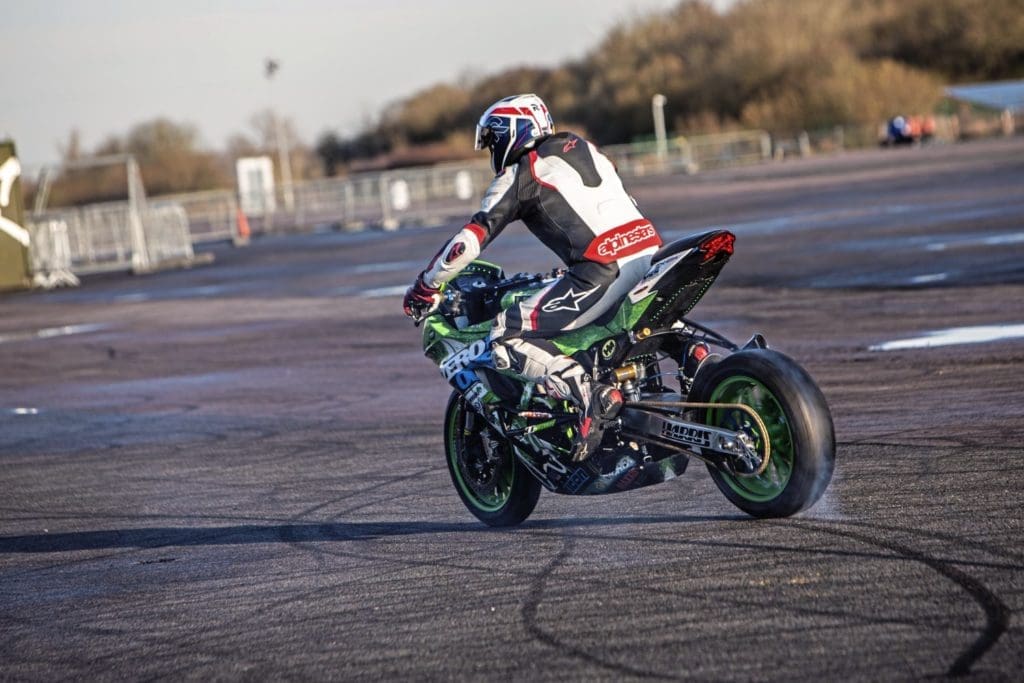
The other thing to consider on the approach to a bend is your gear selection. If you’re needing to go down the ‘box, do it in advance, smoothly. You can prevent rear wheel lock-ups by slowing your engine’s revs, via braking, before going down a selection, one gear at a time. This approach is especially crucial on bikes that don’t feature a blipper system or slipper clutch, because it’s harder to keep the engine speed and rear wheel rotations in balance.
The last thing to factor in on your approach is your body position. Ultimately, you should aim to enter a corner with your bike’s suspension settled and neutral, but moving around on your bike is likely to unsettle the pogos unfavourably. If you’re the type of rider that hangs your weight off into a corner, which arguably moves your mass into a bend and helps you get round them, make the move in advance so the suspension has time to resettle.
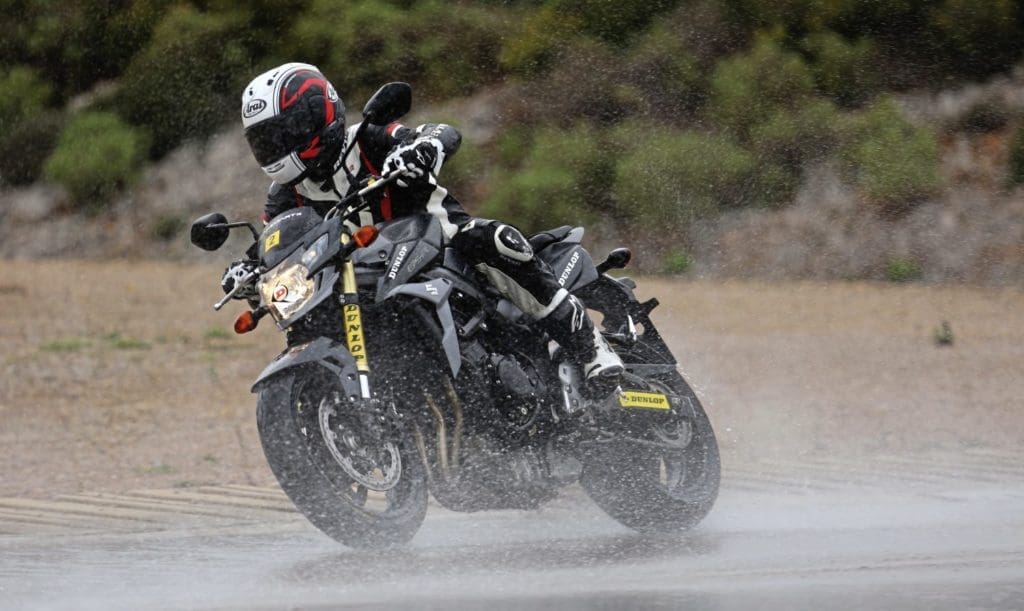
TOP TIP: Soften suspension
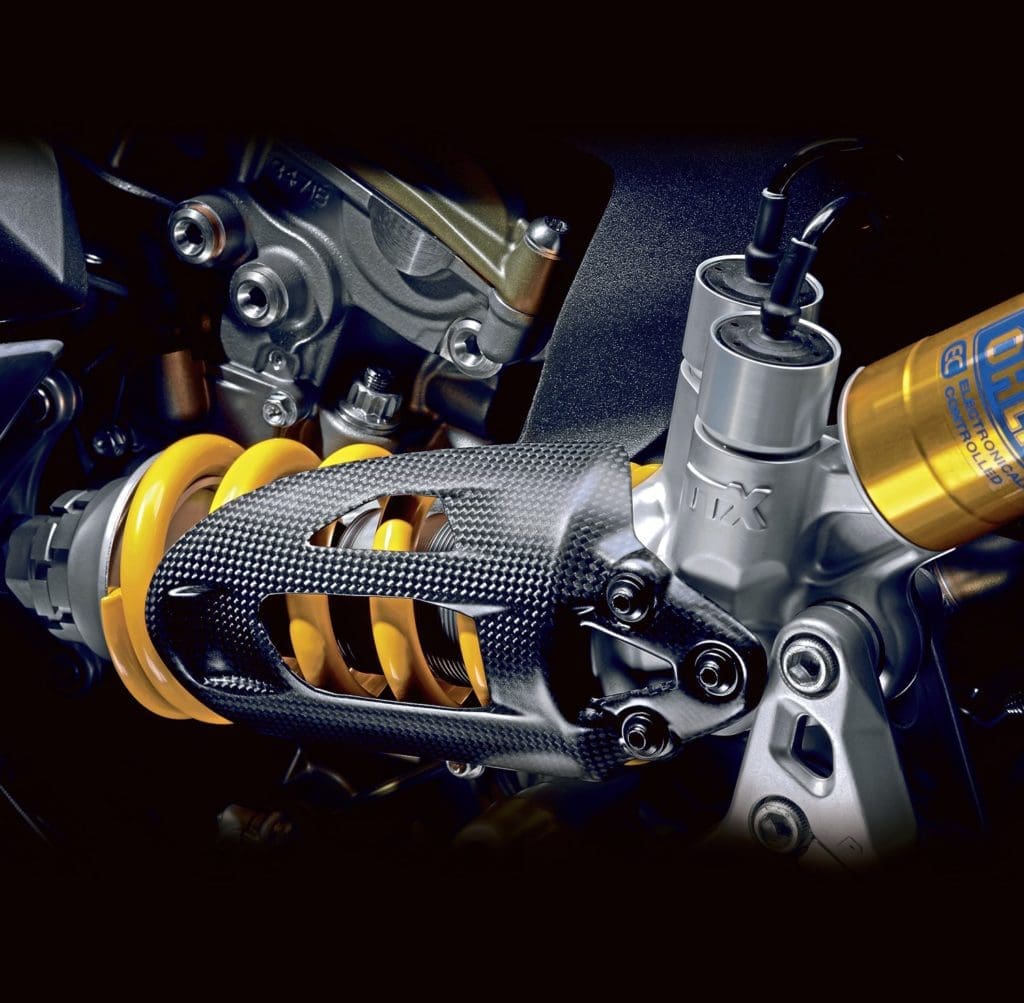
The firmer your setup, the less ‘give’ there is before traction is broken. Supple suspension will mean your bike’s more forgiving to harsh acceleration or braking, just as mid-corner bumps are less likely to rattle your bike and risk a crash. But how soft is soft enough? Most bikes’ suspension is different, with differing springs, oil levels, valving and riders atop of them – hence there’s no magical formula to dial in. As a rough guide on track spec suspension, you’d typically look to reduce compression and rebound damping by three clicks a piece. Some specialists would also back off the preload of a bike by up to three millimetres front and rear, but others argue it’s all about the damping. What’s concurrent is the need to soften your bike’s setup, so ask your suspension supplier for their recommendation and make the right changes.
(CONTINUED) … In most cases, it’s likely you’ll enter a bend with a closed throttle. That means your initial focus should be on your line and working out your optimum entry speed that’ll allow you to meet your apex. In the dry you can trail brake, alter a throttle, or physically bully a bike into running your preferred line, but that’s not so doable in the wet – all of the above are likely to encourage a crash. While corner entry remains crucial to a decent lap time, or pace on a road, ensuring you safely get into a bend has to take precedence. Just how much pace and lean you can get away with is a question for your tyres. Only you will know how they’re reacting to the conditions, so listen to what they’re telling you and lean accordingly, focussing your eyes constantly on the apex you’re aiming to meet. Fingers crossed, you’ll get there just fine, meaning you’re now staring down the barrel of your corner exit. So how do you stay safe but optimise your corner exit? It all comes down to patience and precision.
Don’t be too keen to get on the throttle too hard or too early. It can often pay dividends to corner that little bit longer in the wet, meaning you can get your bike stood upright and driving harder sooner. The alternate is to run a normal line, white line to white line, but with lean constantly in the equation, meaning you can’t get frisky with your throttle hand for a prolonged period. That said, you can reduce the risk of a highside in a corner by marginally opening a throttle, post apex, building your speed and revs progressively. If you do this finely enough, you’ll be able to feel the point traction is broken before a big slide’s developed. Don’t get distracted by looking at your clocks if this does happen, as your engine note will tell you all you need to know. A sudden let off of drive is likely to end in tears, but a constant throttle can sometimes see you out-ride the slide and restore grip levels. It’s a fine line, and one which should be travelled cautiously.

If you’ve opted to get your bike stood upright early, compromising a bit of corner exit speed for the benefit of reduced lean angle, you’ll be able to drive harder, sooner. You should still expect a bit of wheelspin, but it’s a far less concerning problem when you’re upright than at any kind of lean – a wayward rear wheel stepping outwards is relatively manageable by reducing throttle, but try not to chop it completely. All things considered, the wet is a challenging proposition for any rider, but it can also be brilliant fun and psychologically rewarding, so try to enjoy it. If you’re smart with your actions, you’ll arguably be much safer than any rash riding, so use your noggin, take your time and keep relaxed.


